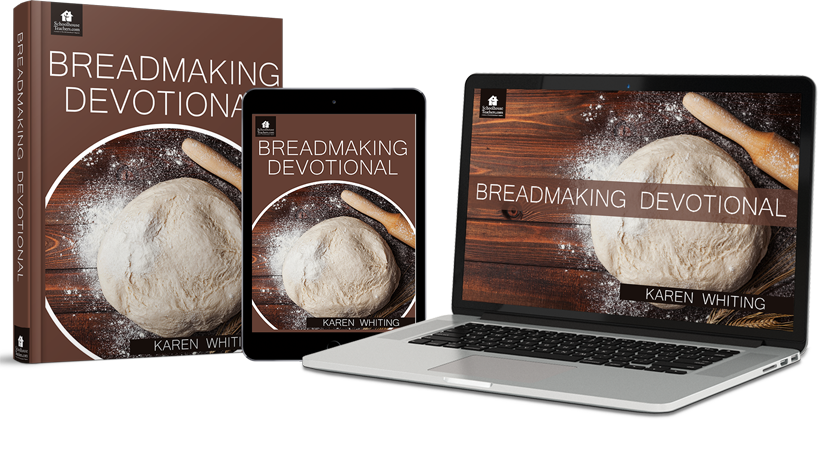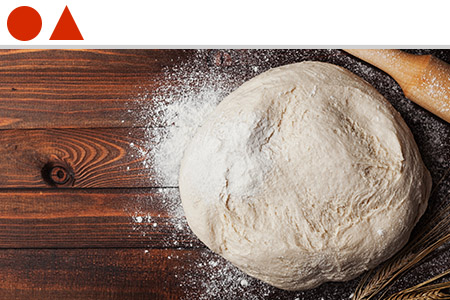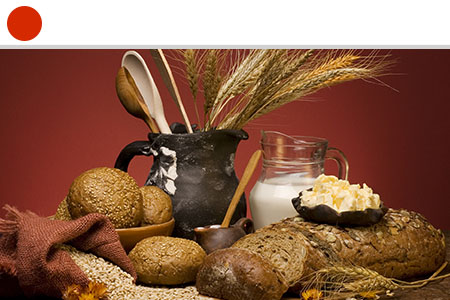Homeschool Breadmaking Devotional Course Sample
Unit 5: Biscuits and Adapting Recipes
Objectives:
- To make a basic biscuit dough and bake biscuits
- To use the dough to bake a different food than a basic biscuit
- Biblical insights regarding bread
This dough may be refrigerated for a week or ten days. Use it to make one biscuit or a whole batch. Use the dough as the basis for a variety of goodies:
Video to watch on making basic biscuit dough: https://www.youtube.com/watch?v=qQhQp2O_M2Y
Preparation checklist:
- Watched video Read recipe
- Have all ingredients
- Have all utensils/tools needed
- Washed work surface
- Washed hands
- Camera/phone ready to take photos
Basic biscuit dough
This great basic biscuit dough has a little history. It was used as early as the Civil War, in West Virginia. People teased that if the Southern generals had used it they would have won the war. It was adapted later to use self-rising flour (leaven is already in with the flour).
Make it and store it for several days. If you keep it a week or more, it will taste and smell like a sourdough biscuit because the yeast has fermented longer in the refrigerator.
Mona’s Civil War Biscuits
Ingredients
- ¼ cup warm water
- 1 teaspoon baking soda
- 2 packages active dry yeast
- ½ cup shortening or vegetable oil
- 5 cups self-rising flour
- 2 cups buttermilk
- 1/3 cup sugar
Tools/utensils needed
- Mixing bowl large enough to hold 8 cups with lid
- Mixing spoon
- Pastry blender or large fork
- Timer
- Measuring cups
- Biscuit cutter or glass with opening desired size to cut biscuits
- Rolling pin (you can press it with your hands or use a glass)
Directions
- Sprinkle yeast into 1/4 cup warm water and set timer for ten minutes to let yeast dissolve.
- Sift flour, soda, and sugar together in large bowl.
- Blend in shortening.
- When timer is done, add yeast mixture and buttermilk and mix well. Make sure flour at bottom of bowl is mixed in.
- Cover bowl and store in refrigerator to use as needed.
- When ready to bake, heat oven to 400°F.
- Pull off enough dough for the number of biscuits needed. Cut biscuits out on lightly floured surface (don’t twist the cutter). Put a little flour on your hands. Place biscuits on greased pan and bake until lightly browned, about 10 minutes (no need to wait for dough to rise).
Note: Handle dough as little as possible. Your hands warm the dough, and that can impact rising in the oven.
Observations
To improve in coking or to be consistent if things go well, take time to evaluate what you made. This includes the appearance, taste, doneness, and notes on any changes for making it again. Changes might include less or more cooking time (ovens and altitude vary and may mean you need to change the oven temperature or length of baking time).
- Doneness (cooked through, not burnt, etc.)
- Taste Appearance (outside color, inside texture)
- Changes to make next time
Once you have made and refrigerated some of the dough, consider ways to use the dough for something different.
Adapting the dough for other treats
You can vary the biscuits by adding other ingredients before rolling the dough out or filling dough that you roll out.
- Add herbs, cheese, or other ingredients to make specialty biscuits.
- Use the dough to make turnovers, cinnamon rolls, or other desserts.
- Use the dough with meat or chicken to make a main dish.
Watch these videos for ideas on using the dough for a variety of purposes.
Choose what you will make
What I will make with the biscuit dough
______________________________________________________________________________
What steps I need to take
______________________________________________________________________________
Ingredients I need
______________________________________________________________________________
Once you make your decisions, take out the dough, ingredients, and any tools needed and make your creation.
Observe the results
- Doneness (cooked through, not burnt, etc.)
- Taste Appearance (outside color, inside texture)
- Changes to make next time
Have fun experimenting more!
Biblical Insights
The manna was like coriander seeds. It looked like sap from a tree. The people went around gathering it. Then they ground it up in a small mill they held in their hands. Or they crushed it in a stone bowl. They cooked it in a pot. Or they made loaves out of it. It tasted like something made with olive oil (Numbers 11:7–8, NIrV).
How many different ways did the Israelites cook the manna?
______________________________________________________________________________
Look up the definition of versatile.
______________________________________________________________________________
How was manna versatile, and how is biscuit dough versatile?
______________________________________________________________________________
______________________________________________________________________________
Look at coriander seeds in the spice section of a grocery store. You might choose to buy some and add it to biscuit dough. Describe coriander seed. ______________________________________________________________________________
______________________________________________________________________________
Play a manna game
Have an adult toss out a roll of pennies and see how long it takes to gather them. If playing with others, divide the number of coins by the number of people and state how many each one can collect (the Israelites could only collect what they needed for one day except the day before the Sabbath).
Chat about the Israelites and collecting manna.
Read John 6:30-41.
What did Jesus say about manna?
______________________________________________________________________________
How is Jesus better than manna God sent from heaven?
______________________________________________________________________________
How is Jesus, the Bread of Life, whom God sent from heaven, versatile? (List some things Jesus did and can still do.)
______________________________________________________________________________































